#30 Slow Home Design
Developing taste and layering space. Also: intensive parenting, the dinner I made twice in one week, and a new novel about the uniquely complicated mess of familial love.
⭕️ Snail Seed Rolls As the inhabiter of very little domestic space, I love the idea of this space-saving seed starting method by Martina Thornhill.1
⭕️ What are We Actually Talking About When We Talk About Intensive Parenting?
⭕️ Dinner Fattoush The simplest, most delicious big salad recipe in ’s new cookbook, which can be endlessly iterated on.3
⭕️ Float Test In ’s fourth novel, a mother dies and her four (mostly estranged) adult children return to their parent’s Florida home to bury her — and chip away at the complicated rifts that have grown between them since childhood.4
If-you-give-a-mouse-a-cookie house
A few weeks ago, I wrote about making home in other people’s houses. Here’s the next installment of my thoughts on home: what it means, what it’s looked like for me and my family through the years, what it looks like now.
You see it on Instagram, you see it in home design magazines: someone moves into a new space, they vision and design and realize in remarkable time (it could be weeks, it could be months — whatever the span, it’s a project that gets completed), and then they share the finished product online. Usually with a list of paints and papers and furniture and objects sourced.
This decisiveness and speed is rewarded with attention. We love to see it!
I think we love to see it because we’re being handed the keys to the kingdom. We can easily replicate whatever it is that we like because there are links to whatever we need to purchase to make the look our own.
This is, of course, a profession. But so much of how we think about home now is colored by an interior designer’s mindset — you’re hired to get the whole job done in a set period of time so the people living in the space can get on with their lives — even when the majority of us are not professionals, and don’t really have the type of budget that can be allocated to this approach.
HGTV, TikTok, Pinterest, and the blogosphere have provided a more democratic access to design-thinking in the past couple of decades, so much so that we might think we know as much as the professionals. Our sense of beauty has been deeply informed by whatever is currently saturating our feeds (remember when chevron was the thing? And white marble the only real choice for a countertop?). Through repeated exposure, we’ve been taught enough to think we speak the language.
But true taste is something developed and seasoned over time. And there are so many pitfalls to the one-and-done approach to decorating (most of which I’ve experienced first hand).
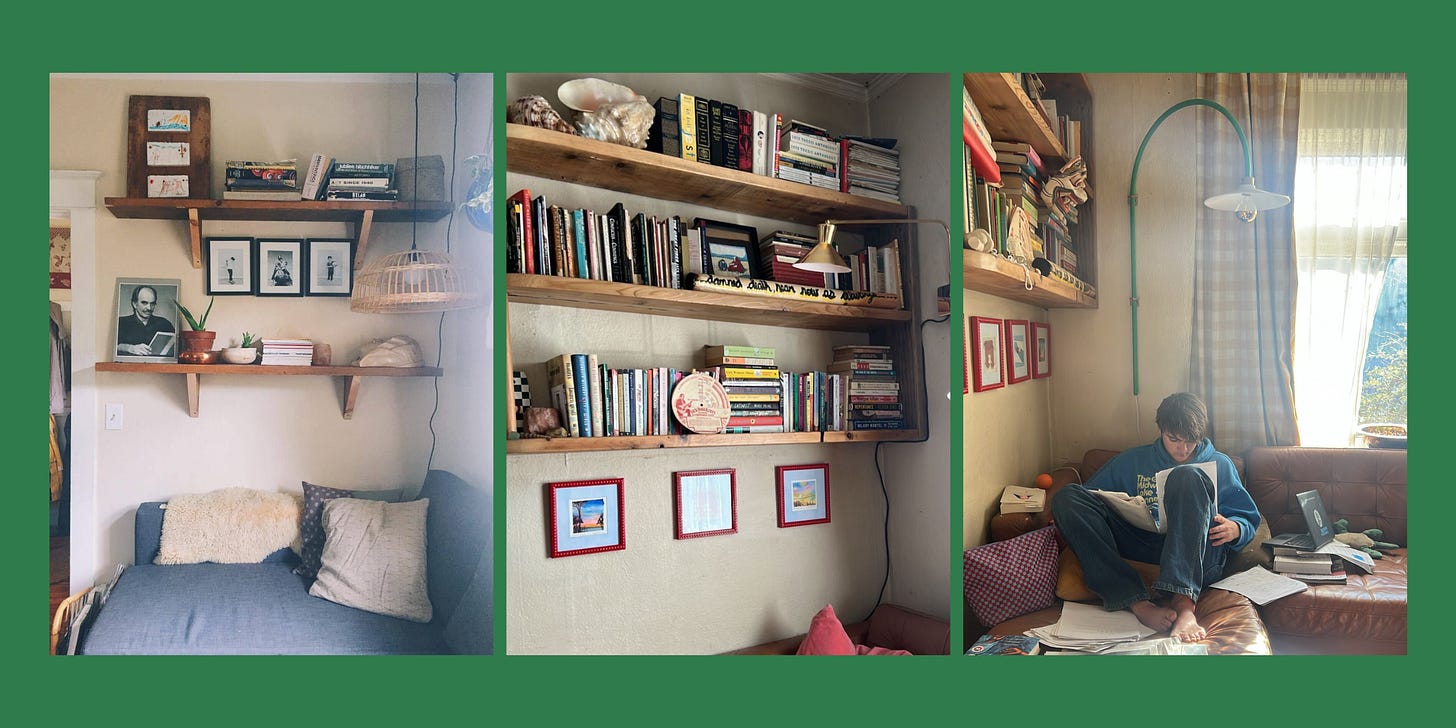
When we move quickly to finish a space, we’re more likely to be influenced by trends — because that’s what is immediately available to us. It’s the stuff that’s currently on the shelves at Home Goods (or online), the greige palette coloring our feeds, the shapes and lines that currently dominate magazines.
And I know that for many (most?) people this is exactly the point; to quickly furnish a living space so you don’t have to think about it anymore.
But when we move fast, we’re also more likely to make choices influenced by the physicality of a space, rather than how it feels to truly live in it.
This might look like a chair that is gorgeous but actually miserable to sit on, a velvet sofa cover that only looks good when no one — including the pets — touches it (🙋♀️), a lamp shade that constrains the light when you need it to flood, or turns it blue when you’d prefer it to be warm.
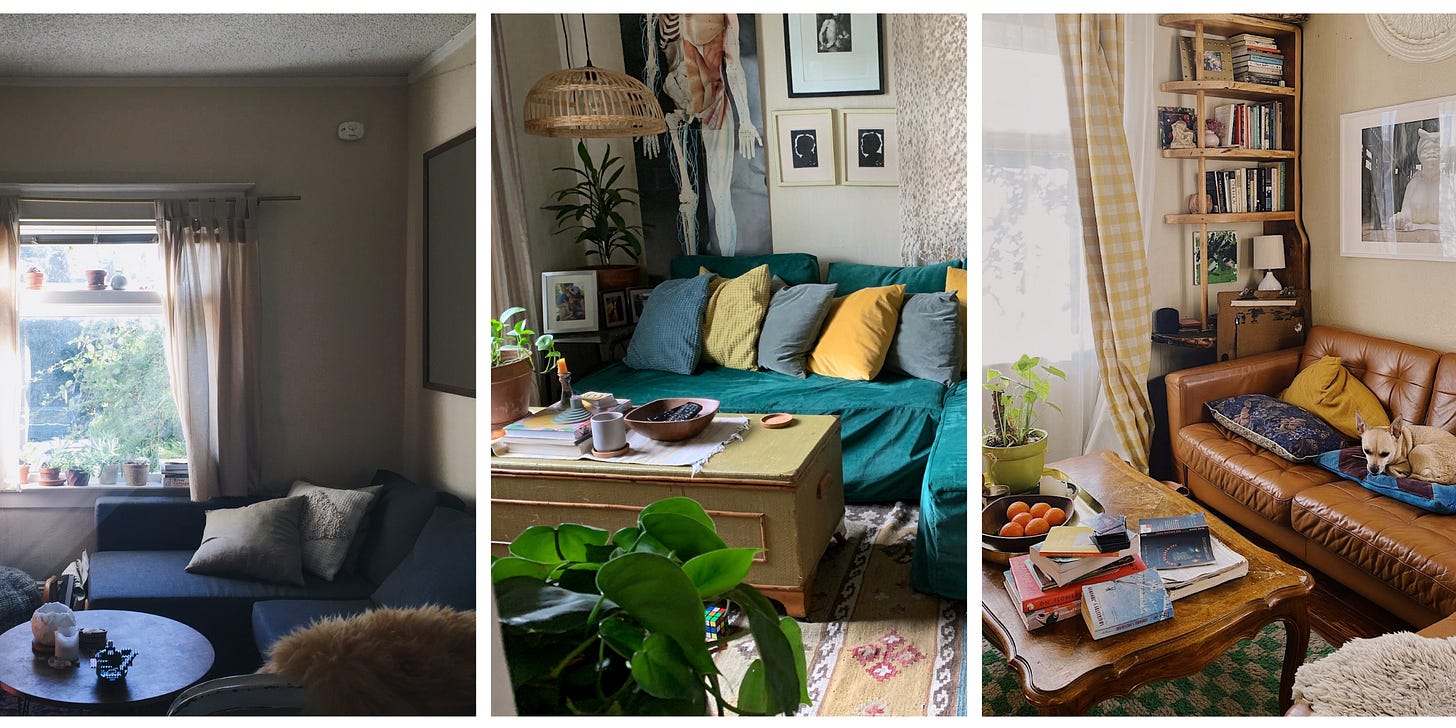
Some of this you have to live to learn!
And I absolutely know the compulsion. I felt it every time we moved house in my 20s: I wanted to figure out the space, get the right furniture in the right place, and the right colors on the wall quickly so that I could get on with living and not be so distracted by the unfinished-ness of it all.
But here’s what I’ve learned: my home will always talk at me, no matter how done I think I am.
Sometimes it’s the floorboards that need to be dusted. Sometimes a corner whispers that it needs a little something more to make it feel complete. Sometimes the couch cushions scream to be straightened and you can’t read your book until you deal with it. It’s never really done.
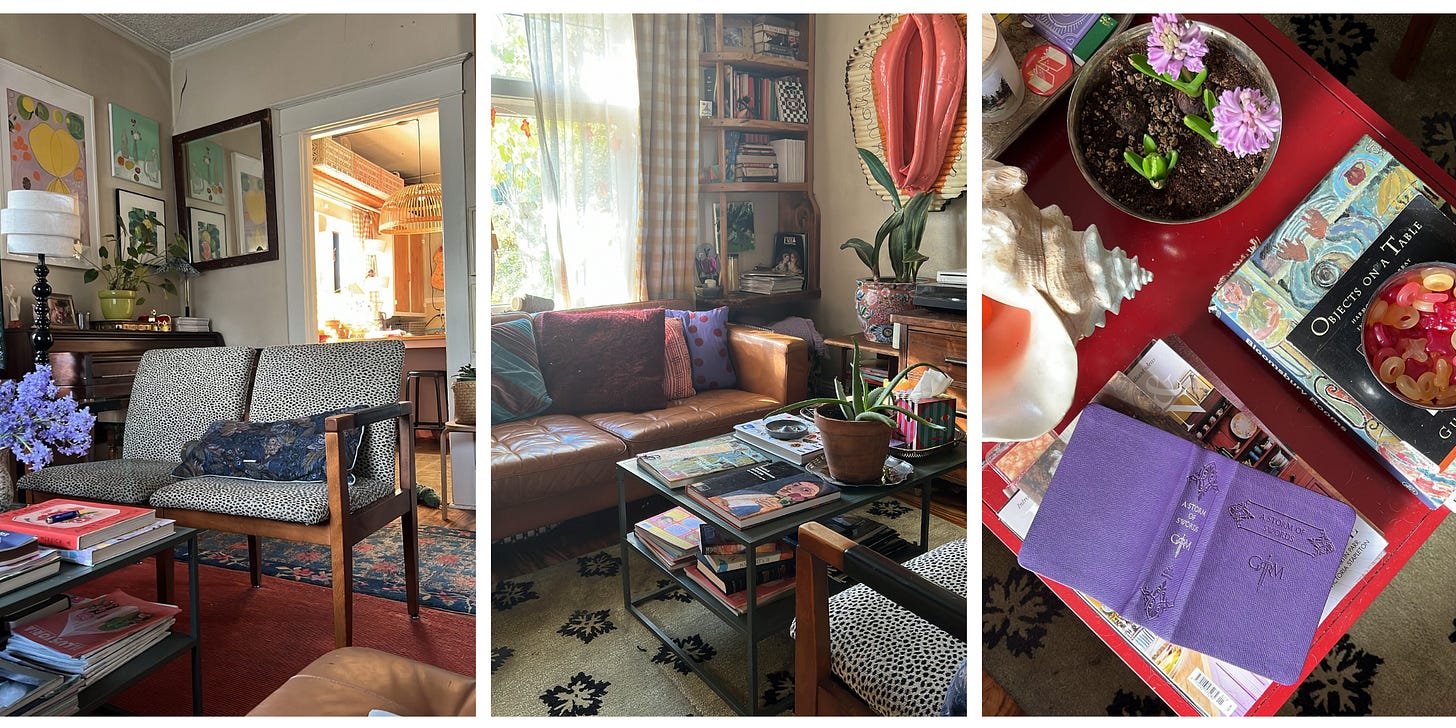
One of the loudest ways my house talks to me can feel like that children’s book, If You Give a Mouse a Cookie, which warns of the dangers of giving a mouse the cookie it wants — because next it will want a glass of milk, and then a straw, and then a napkin… It’s exasperating and charming. And I’ve seen this play out in my house over and over again.
We finally get the display couch I’ve been calling IKEA about every week for months, and suddenly the rug is the wrong color. I find a rug that works better, but then we need to paint the coffee table. The lines of the coffee table look too sharp in the new color and it needs some soft, organic objects to top it. Everything looks right in the living room, but the sightline into the kitchen…
I work primarily with secondhand stuff and DIY, but even so, it can feel wasteful. Stuff is still stuff, no matter how little it costs.
Imagine this at the scale currently popular: entire rooms designed on trends that become irrelevant in a year or two and need to be completely rethought and redone.
It’s so much more sustainable to develop taste rather than keep up with trends.
When I first had my own home(s) to fully fill, minimalism was quietly becoming the thing. This was the 2010s, so Pinterest was coming online as well. I’d sit on the subway during my long commutes from Brooklyn to the Upper West Side and pin and pin. I was such an active early user of Pinterest; it felt like a place to catch and save material wishes in a way that made them tangible. I had boards dedicated to each room in my house — and even some for houses that only existed in fantasy — and they were all whitewashed, spare, clean lines, Scandi.
I tried hard to realize this look for a while. I collected midcentury furniture made of wood and iron, put sheepskin rugs on things (or moved the one I had to different spots around the house), played with hanging just one picture on the wall, just barely populating the shelves. I even painted the floorboards white in one apartment.
But have you seen who I live with?
Sebastian is an artist in a constant state of creation, and my kids also like things.
It look longer than it probably should have for my mental health (and relationship), but I let go of minimalism, and gradually embraced something closer to maximalism — which they say is actually better for small spaces anyway?
I learned how to steer my imagination away from prescriptive sources and instead study an image to really consider what it is that resonates. Sometimes it’s a color combination, or a grouping of objects, or a texture — or how it’s all layered together. Sometimes it’s seeing an object used for a purpose other than the one I’m familiar with (shallow silver basins for growing bulbs, a giant shell for holding clementines).
While I probably would never say that my home is fully “finished,” I do think it’s gotten to a place where it doesn’t occupy a lot of mental space. And it gives me pleasure, to look around and see the beauty and relative order of it all.
It’s only taken 10 years.
And we’re only about to shuffle everything around again to make room for another family member…
I decided not to give myself another new thing to care for this summer (except for the starts I ordered from Sparrow Hawk), but next year I’m going to give this a try!
In the piece, intensive parenting is defined as “child-centered, expert guided, emotionally absorbing, labor intensive and financially expensive,” and also “performance-oriented, unequally distributed [in heterosexual partnerships], and anxiety-producing.”
Maybe I’ve still got Bringing Up Bébé on my mind, or maybe it’s because we’re nearing the end of the super hands-on phase of parenting with the boys (and feeling relatively good about how it’s gone, retrospectively?), but I’ve been thinking a lot about what we might do differently this time around — especially as this new one may essentially be an only child.
I made it earlier this week with meatballs on the side (I always have a bag of these in the freezer), and used sugar snap peas and cilantro, because it’s what I had at hand. It was substantial enough for next-day lunch, and I’m making it again today, for a friend.
One of the things I loved best about this book is how it shows the real miracle of family: that we can cause each other such lasting harm, through perhaps small but always persistent hurts that touch our tenderest spots and color how we experience the world — even decades later — but we can still feel compelled to come together, and pick at the scab to see if what’s underneath is different now. That we can still want each other, despite all that hurt.
Lynn gets the messiness of that love so right in this book.
Come back for more of her next week!!






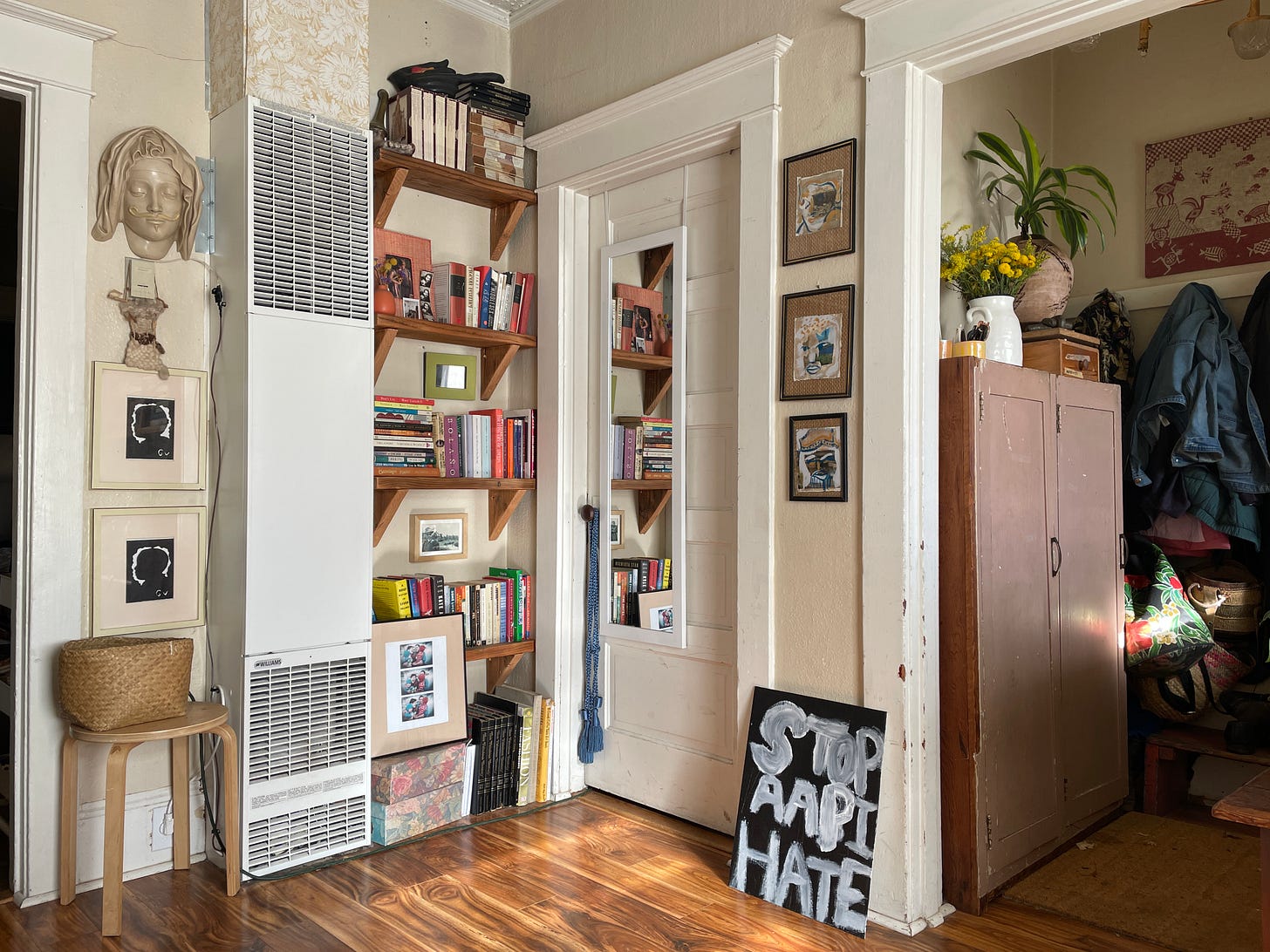
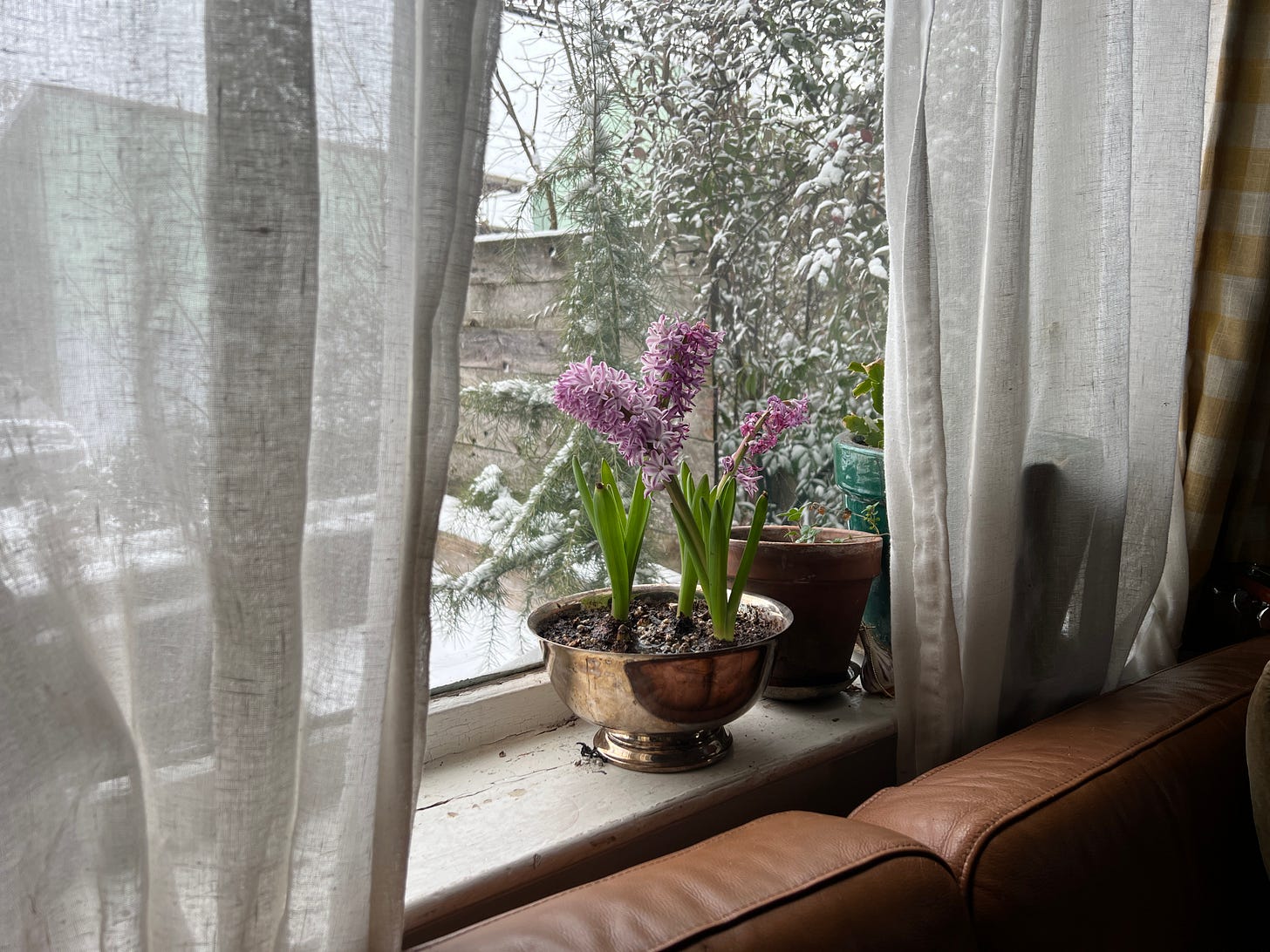



I love your home! My biggest beef with interior tours online is that most of the time, it looks like no one lives there.
Also, thank you for putting the LSS book on my radar! I loved her book Flight. It needs to be adapted into a movie ala The Family Stone ASAP.